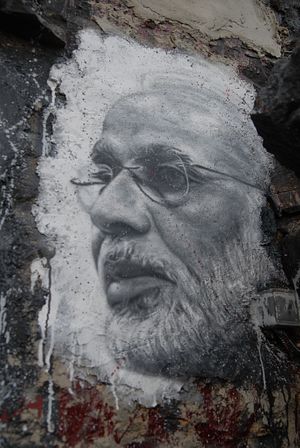Just five months before a 7.8 magnitude earthquake struck Nepal, killing nearly 7,000, South Asia’s leaders had met in Kathmandu for the 18th Summit of the South Asian Association for Regional Cooperation (SAARC). SAARC, while long envisaged by regional leaders as South Asia’s most realistic path to deeper regional cooperation, has failed to deliver in a number of ways.
India, the regional power, has taken a special interest in buttressing the regional organization in recent months. Indian Prime Minister Narendra Modi has instructed his government to prioritize India’s relations with SAARC states and, in turn, help SAARC become a more mature institution, capable of delivering real benefits within the region. In March, Indian Foreign Secretary S. Jaishankar conducted a tour of SAARC capitals to hold talks with regional leaders, demonstrating the Modi government’s continuing commitment to India’s neighborhood.
Last week, speaking just days after the earthquake struck Nepal, Modi suggested that SAARC states increase their cooperation in the areas of humanitarian assistance, search-and-rescue, and disaster relief, by conducting regular exercises. “SAARC Nations can come together and hold annual exercises of rescue teams, doctors etc on how we can minimise damage during natural disasters,” Modi tweeted after reportedly speaking to Pakistani Prime Minister Nawaz Sharif. Historically, one of the primary inhibitors to SAARC’s maturation as an institution has been the long-standing enmity and rivalry between its two largest member states: India and Pakistan.” PM Nawaz Sharif appreciated India’s efforts in the rescue operations in Nepal. I thank him for his kind words,” Modi added, suggesting that Pakistan was on board for the proposal.
Of course, Modi’s ideas remain far from being implemented. Apart from a few tweets, there is little concrete reason to credibly expect SAARC states to begin multilateral exercises to better coordinate a regional response to future natural disasters and crises. In December 2004, after the major Indian Ocean earthquake and tsunami disaster, the region failed to coalesce multilaterally, through SAARC or otherwise. At the time, though individual SAARC member states dispatched their militaries and announced aid packages to assist with disaster relief efforts, there was little regional coordination.
In the wake of Nepal’s earthquake and the experience of states like India and Pakistan in responding, it is likely that humanitarian assistance and disaster relief cooperation will feature more prominently on the agenda of the next SAARC summit. It is also encouraging that the Indian prime minister envisages a more active role for SAARC within the region. Without Indian interest and leadership, the institution faces the prospect of languishing in a state of irrelevance.

































